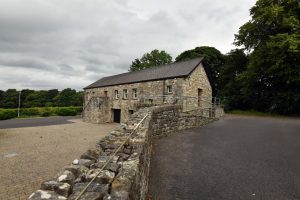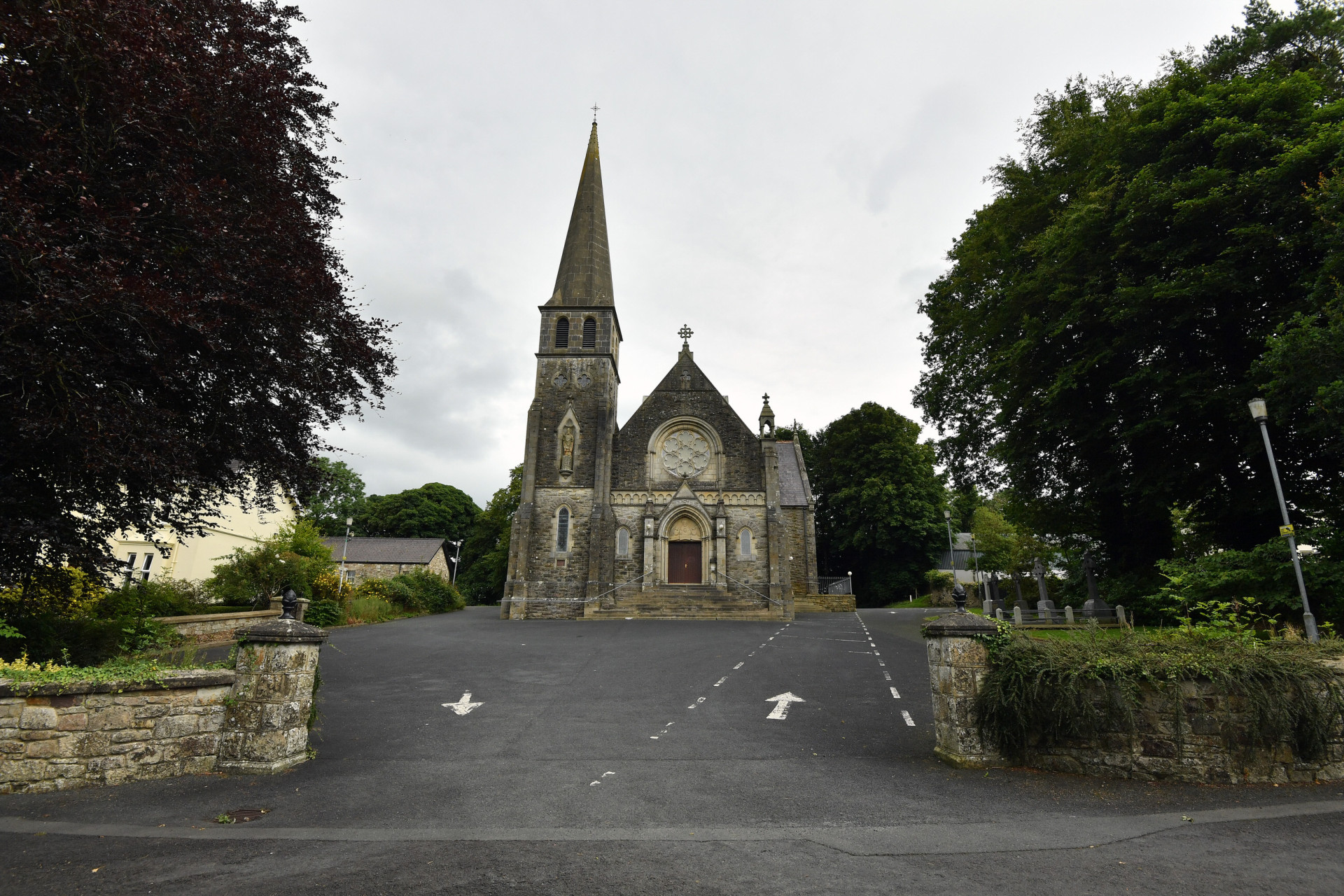In the middle of Gortin stands a beautiful church that once served a very different purpose. The building’s transformation from a destitute workhouse to a place of worship is a remarkable tale that harks back to the famine era in Ireland.
The Poor Law Amendment Act of 1834, a landmark legislation passed in the English Parliament, paved the way for the establishment of workhouses across Ireland.
Aimed at reforming strategies against poverty, the act offered the desperately poor (referred to as ‘paupers’) a chance to work in exchange for food and shelter.
Gortin was one of the few places in Tyrone to receive planning for a workhouse,
The Gortin Poor Law Union was officially declared on May 7, 1839, setting the stage for the construction of the workhouse.
Though landlocked to Gortin, it was anticipated to admit paupers from the surrounding areas of Crockanboy, Fallagh, Glenchiel, Glenlark, Glenroan, Lislea, Loughash, Mount Hamilton, Moyle, Plumbridge, Stranaganwilly, and Trinamadan.
The workhouse was designed by English architect George Wilkinson, who designed many of Ireland’s workhouses, and construction of the Gortin site was completed on February 17, 1842, to the final cost of £2,689 plus an extra £711 for various fittings.
The main building of this workhouse was designed in a three-storey T-shaped block, with the master’s quarters in the centre and adjoining wings for the male and female wards at either side.
Behind the main block in the tail of the T was the kitchen, dining hall, and most importantly, the first chapel to occupy the site.
Behind the main block was the workhouse’s infirmary, which at this stage was just a small clinic to hold only half a dozen ill inmates.
The site also held outhouses, stores, a dispensary, and, apparently, Gortin’s police station was based out of the workhouse.
Because of the small size of Gortin’s workhouse, the posts of union clerk and workhouse master were initially combined, with Daniel McFarland being the first appointed to the role.
These posts were however subsequently separated with McFarland’s son coming in to be appointed as clerk.
A list of staff compiled in 1855 showed that the workhouse chapel was staffed by three ministers of different Christian faiths.
Reverend N Stephens was the Protestant minister, Rev Paul Brady was the Catholic minister, and Rev Matthew Logan ran the presbytery. Notably, the infirmary lacked a doctor and was solely staffed by one nurse named Margaret McShane.
The workhouse also had a school for the child inmates, which was run by Anne McCrory.

Famine
Only five years after the workhouse opened, the Irish famine of 1847 brought an influx of desperate paupers to its doors. The Poor Law Commission, recognising the national crisis, ordered the construction of fever hospitals within workhouse premises.
Gortin’s workhouse received several improvements, including an extra storey for the infirmary and a new shed for additional inmates.
A brand new fever hospital was also built nearby, allowing for 36 new beds.
During the famine, the workhouse kitchen provided porridge to anyone who brought their own bowls. Seed potatoes, oats, and grass seeds were distributed for a fee.
Despite these efforts, the crisis pushed many families to their limits, leading some parents to seek better lives for their children. In 1850, four teenage girls from Gortin were deported to Australia, arriving in Melbourne on February 25.
Despite being a home for the poor, the workhouse was also used in 1890 as a court for the inquest into the mysterious death of a woman found on the mountains.
On October 6, the workhouse was scrambled to a coroner’s court following the finding of Catherine Ann McKenna on Fallagh mountains the day before.
The jury in the hearing decided that no conclusive decision could be taken into the death due to the lack of any evidence, but the likely cause of death was from exposure to the brutal cold autumn night.
Following the famine, the population of the Gortin workhouse began to decline. By March 26, 1889, the Gortin Board of Guardians successfully petitioned the Local Government Board to dissolve the Gortin Work Union. The remaining inmates were transferred to workhouses in Omagh or Strabane.
Within a year, an advertisement appeared in the ‘Freeman’s Journal’ for the sale of the site.
The ad appeared on June 18, 1890, by William Cathcart, the Clerk for the Omagh Workhouse, who only offered two of the three acres in the Gortin site.
The workhouse was eventually abandoned and later purchased by local merchant Patrick McCullagh, who donated the land to the Catholic church.
The workhouse was demolished, and much of its stone was used to build the present-day St Patrick’s Church and parochial house. At the same time, the Presbyterian Church bought the fever hospital and surrounding grounds to convert into a residence for their minister.
Completed in 1898, the church, a detached double-height gothic revival style building, continues to host Mass each day 100 years later.
Despite its transformations, the legacy of the original workhouse remains, with 33 graves on the southern wall of the church site containing those who died in the fever hospital or within the workhouse grounds.







